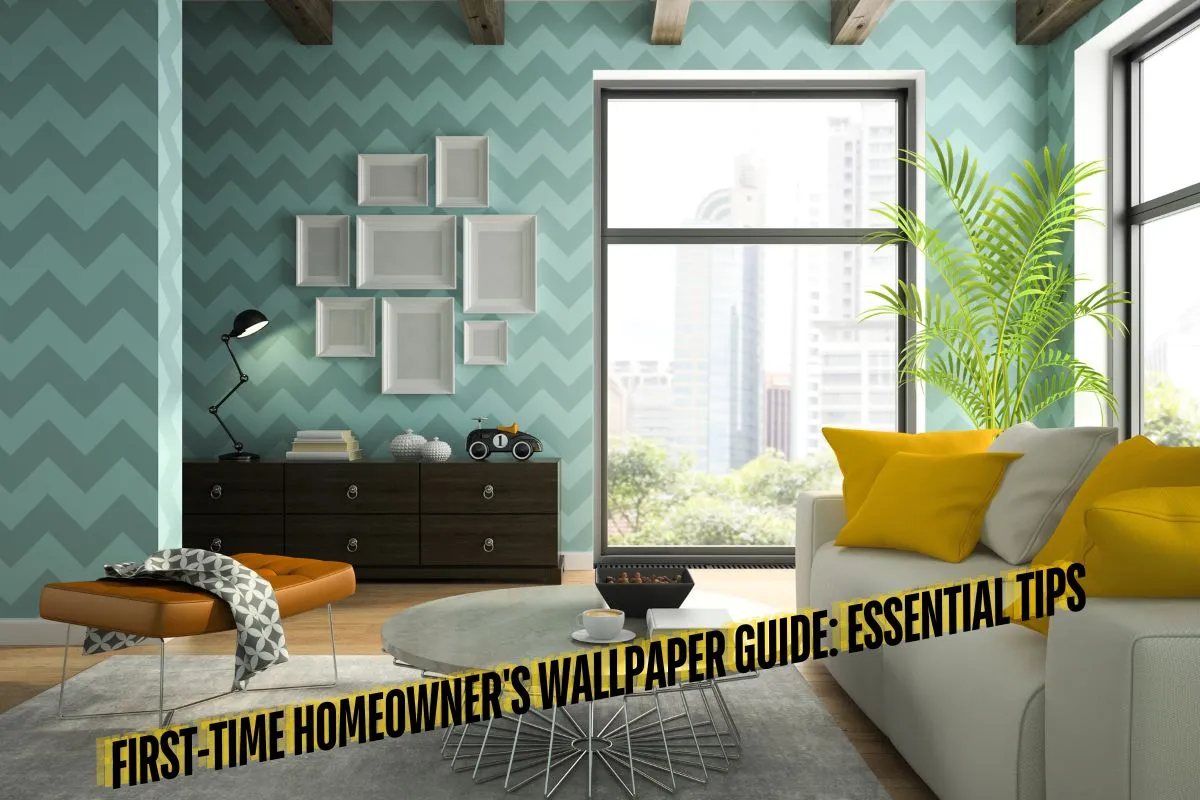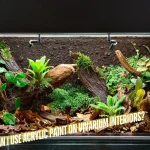Becoming a first-time homeowner is a thrilling adventure. It’s your chance to turn a house into a home, and one of the most exciting ways to do that is through wallpaper. Wallpaper can add personality, texture, and depth to your space, making it feel uniquely yours. But if you’ve never wallpapered before, the process might seem a bit intimidating. Don’t worry—this guide is here to help! We’ll walk you through everything you need to know, from choosing the right wallpaper to installing it like a pro.
Why Wallpaper?
Wallpaper has made a huge comeback in recent years, and for good reason. It’s versatile, stylish, and can completely transform a room. Unlike paint, which can sometimes feel flat, wallpaper adds dimension and character. Whether you want a bold statement wall or a subtle textured backdrop, wallpaper can do it all.
When I moved into my first home, I was hesitant about wallpaper. I thought it was outdated or too complicated. But after seeing a friend’s living room with a stunning floral wallpaper accent wall, I was sold. It added so much warmth and personality to the space. I decided to take the plunge, and it was one of the best design decisions I’ve made.
| Topic | Key Points | Tips/Examples |
|---|---|---|
| Why Choose Wallpaper | Adds personality, texture, and depth to a room. Versatile and transformative. | Example: A floral wallpaper accent wall can add warmth and elegance to a living room. |
| Types of Wallpaper | 1. Traditional Paper: Classic but requires paste. 2. Vinyl: Durable, water-resistant. 3. Peel and Stick: Beginner-friendly. 4. Textured: Adds tactile feel. 5. Fabric: Luxurious but delicate. |
Use vinyl for kitchens/bathrooms, peel and stick for renters, and fabric for low-traffic areas. |
| Choosing the Design | 1. Consider room size and lighting. 2. Think about pattern scale. 3. Match color scheme. 4. Reflect the room’s purpose. |
Small patterns for subtlety, large patterns for accent walls. Soft colors for small rooms. |
| Preparing Walls | 1. Clean walls thoroughly. 2. Repair holes/cracks. 3. Apply primer. 4. Measure and mark. |
Primer ensures better adhesion and easier removal. Smooth walls are essential for peel-and-stick. |
| Installing Wallpaper | 1. Cut wallpaper with extra inches. 2. Apply paste (if needed). 3. Align and smooth. 4. Trim excess. 5. Repeat and align patterns. 6. Use a seam roller. |
Patience is key! Double-check pattern alignment for a professional finish. |
| Maintaining Wallpaper | 1. Dust regularly. 2. Clean with mild soap (for vinyl/washable). 3. Avoid moisture. 4. Patch damage. 5. Protect from sunlight. |
Use curtains/blinds to prevent fading. Repair small tears with matching wallpaper strips. |
| Common Mistakes | 1. Skipping wall prep. 2. Mismatched patterns. 3. Not using primer. 4. Ignoring instructions. 5. Overlapping seams. |
Take time to prep walls and align patterns. Follow manufacturer guidelines for best results. |
Quick Reference Guide
| Step | What to Do |
|---|---|
| Choose Wallpaper | Pick a type and design that suits the room’s purpose, size, and lighting. |
| Prepare Walls | Clean, repair, prime, and measure walls before installation. |
| Install Wallpaper | Cut, paste (if needed), align, smooth, trim, and repeat. Use a seam roller for clean edges. |
| Maintain Wallpaper | Dust regularly, clean gently, avoid moisture, repair damage, and protect from sunlight. |
| Avoid Mistakes | Don’t rush prep, align patterns carefully, use primer, follow instructions, and avoid overlaps. |
Types of Wallpaper: Which One’s Right for You?
Before you start shopping, it’s important to understand the different types of wallpaper available. Each type has its own pros and cons, so choosing the right one depends on your needs and the room you’re decorating.
1. Traditional Paper Wallpaper
This is the classic option, known for its wide range of patterns and textures. However, it requires paste for installation, which can be tricky for beginners.
2. Vinyl Wallpaper
Vinyl is durable, water-resistant, and easy to clean, making it perfect for high-traffic areas like kitchens and bathrooms. It’s a great choice if you have kids or pets.
3. Peel and Stick Wallpaper
This is the ultimate beginner-friendly option. It’s easy to apply, remove, and replace, making it ideal for renters or anyone who likes to change up their decor frequently.
4. Textured Wallpaper
If you want to add a tactile element to your walls, textured wallpaper is the way to go. From linen-like finishes to faux brick or wood, the options are endless.
5. Fabric Wallpaper
For a luxurious feel, fabric wallpaper is a beautiful choice. However, it’s more delicate and harder to maintain, so it’s best suited for low-traffic areas like bedrooms.
Pro Tip: When choosing wallpaper, consider the room’s purpose and how much wear and tear it will endure. For example, a durable vinyl wallpaper might be better for a hallway, while a delicate fabric wallpaper could work well in a formal dining room.
How to Choose the Perfect Design
Selecting the right wallpaper design is crucial—it sets the tone for your entire room. Here’s how to make the best choice:
1. Consider Room Size and Lighting
Light colors and small patterns can make a small room feel larger, while dark colors and bold patterns can create a cozy, intimate vibe. If your room lacks natural light, opt for wallpaper with a reflective finish to brighten the space.
2. Think About Pattern Scale
Large patterns can be overwhelming in a small room but work beautifully as an accent wall. Smaller patterns are more versatile and can be used throughout the room.
3. Match Your Color Scheme
Your wallpaper should complement your existing furniture and decor. If you’re unsure, bring home samples and see how they look in your space.
4. Reflect the Room’s Purpose
A calming, neutral wallpaper might be perfect for a bedroom, while a vibrant, playful pattern could be ideal for a kid’s room or playroom.
When I was choosing wallpaper for my home office, I wanted something inspiring but not distracting. I settled on a subtle geometric pattern in soft blues and grays. It added just the right amount of personality without overwhelming the space.
Preparing Your Walls: The Key to Success
Proper preparation is essential for a flawless wallpaper installation. Skipping this step can lead to bubbling, peeling, or uneven adhesion. Here’s how to prep your walls like a pro:
1. Clean the Walls
Dust and dirt can prevent wallpaper from sticking properly. Wipe down your walls with a damp cloth and mild detergent, then let them dry completely.
2. Repair Imperfections
Fill in any holes or cracks with spackle, and sand them smooth. This ensures a flat, even surface for your wallpaper.
3. Prime the Walls
Applying a primer helps the wallpaper adhere better and makes future removal easier. If you’re wallpapering over a dark color, a primer can also prevent it from bleeding through.
4. Measure and Mark
Measure your walls and mark where each wallpaper strip will go. This helps you align the pattern and avoid mistakes.
Pro Tip: If you’re using peel-and-stick wallpaper, make sure your walls are completely smooth. Any bumps or imperfections will show through.
Installing Wallpaper: Step-by-Step
Now comes the fun part—installing your wallpaper! Follow these steps for a smooth, professional-looking finish:
1. Cut the Wallpaper
Measure the height of your wall and add a few extra inches to each strip. This gives you room to trim the edges for a perfect fit.
2. Apply Paste (for Traditional Wallpaper)
If you’re using traditional wallpaper, apply paste to the back of the first strip. Fold the strip with the pasted sides together (this is called “booking”) and let it sit for a few minutes to activate the adhesive.
3. Align and Smooth
Starting at the top of the wall, align the first strip with your markings. Use a smoothing tool to press the wallpaper onto the wall, working from the center outwards to remove air bubbles.
4. Trim Excess
Use a sharp utility knife to trim the excess wallpaper at the ceiling and baseboards.
5. Repeat
Continue with the next strip, making sure to align the pattern with the previous strip. Take your time to ensure the pattern matches perfectly.
6. Final Touches
Once all the strips are in place, use a seam roller to press the edges, ensuring they’re firmly adhered.
When I wallpapered my dining room, I was nervous about getting the pattern to align. I learned that patience is key. Taking my time and double-checking each strip made all the difference. The end result was a beautifully wallpapered room that felt like a true reflection of my style.
Maintaining Your Wallpaper
Once your wallpaper is up, you’ll want to keep it looking fresh for years to come. Here’s how:
- Regular Cleaning: Dust your wallpaper regularly with a soft cloth or duster. For vinyl and washable wallpapers, use a damp cloth with mild soap to clean stains.
- Avoid Moisture: In high-humidity areas like bathrooms, ensure proper ventilation to prevent peeling or mold.
- Repair Damage: If your wallpaper gets damaged, you can often patch it with a new strip. Just make sure to match the pattern carefully.
- Protect from Sunlight: Prolonged exposure to sunlight can cause wallpaper to fade. Use curtains or blinds to protect it.
Common Mistakes to Avoid
Even with the best intentions, mistakes can happen. Here are some common pitfalls to watch out for:
- Rushing the Prep Work: Skipping or rushing through wall preparation can lead to problems later on. Take the time to do it right.
- Mismatched Patterns: Be meticulous about aligning the pattern. Mismatched patterns can be very noticeable.
- Not Using Primer: Primer helps the wallpaper adhere better and makes future removal easier. Don’t skip this step.
- Ignoring Instructions: Each type of wallpaper may have specific instructions. Follow the manufacturer’s guidelines for the best results.
- Overlapping Seams: Overlapping seams can create unsightly ridges. Butt the seams together carefully for a smooth finish.
Final Thoughts
Wallpapering your home for the first time can be a rewarding experience that transforms your space into something truly special. By choosing the right wallpaper, preparing your walls properly, and taking your time during installation, you can achieve professional-looking results.
As renowned interior designer Kelly Wearstler says, “Don’t be afraid to experiment with bold patterns and colors. Wallpaper can be a great way to add personality and style to your home.” With the tips in this guide, you’ll be well on your way to creating a home that reflects your unique style and taste.
If you’re ever in doubt, don’t hesitate to seek advice from professionals or trusted home improvement resources like This Old House or Bob Vila. Remember, your home is your canvas, so have fun with it!









